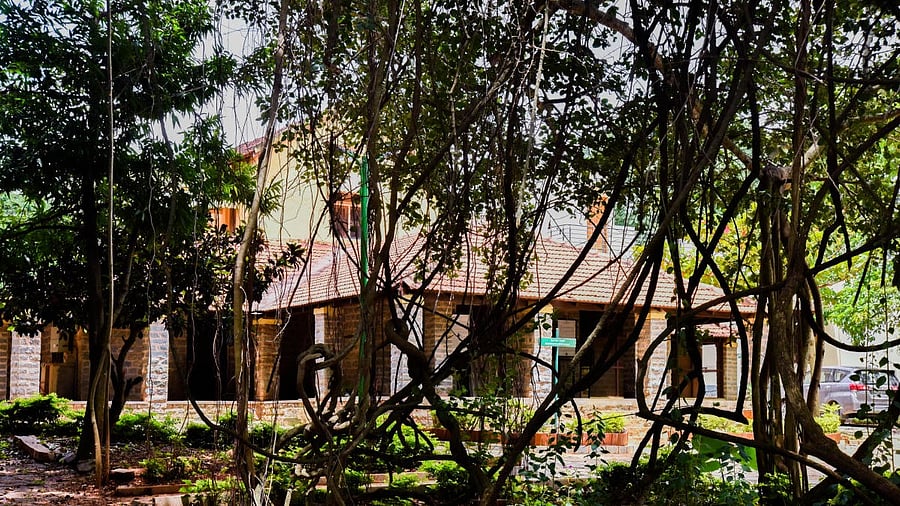
The Roerich and Devika Rani Estate on Kanakapura Road near Bengaluru.
Credit: DH photo
Bengaluru: Amid the opposition for developing the Roerich & Devikarani Roerich Estate or Tataguni estate as a tourist spot, documents show that the government has proposed to take up 32 different works that will end up destroying the ecologically sensitive area to make it a “vibrant cultural and artistic hub” attracting tourists from around the world.
While the project has been in the news for the last few months after the Union government approved the scheme, the details of the works proposed by the department had not been made available. The Tourism Department recently finalised a management plan for the project which spelled out the works.
As per the project management plan, submitted by the department, the 468 acres will be turned into a tourist hotspot by taking up development works that will change the land use pattern. The state government is borrowing Rs 99.17 crore as an interest-free loan to take up the project.
An Entrance plaza, parking area, an additional “vehicular plaza”, cafes, amphitheatres, cottages, landscaping works, a community kitchen, an adventure sports arena, bicycle track, toilets, kitchen, safari loop, tents and an aviary are all part the development plans. The carrying capacity of the newly built tourist amenities is estimated at 26,946.
Works proposed at Tataguni Estate.
DH Illustration
In several contexts, the project prioritises visual aesthetics over ecology. For instance, the project proposes to merge two lakes - Tataguni lake and Kuppareddykere - and build two bridges of 270-metre each to connect the land parcels across the newly merged water body to create “picturesque viewpoints”.
Similarly, the project involves building “vernacular cottages along the lakefront and garden cottages” that will provide an “immersive nature experience.” The project will also make space for caravan tourism.
Back in May 2017, wildlife biologist and conservationist Sanjay Gubbi wrote to the forest department about the “first ever” documented record of smooth-coated otters for Bengaluru in the Roerich estate. “The smooth-coated otter is listed under Schedule II of the Wildlife Protection Act 1972. They are primarily threatened by loss of habitat due to loss of wetlands,” it said.
Interestingly, the document acknowledges that the estate is home to many mammals and “has an elephant movement corridor” but believes its interventions are eco-friendly. In March 2022, an elephant died after being hit by a BMTC bus as the NHAI delayed the construction of an animal overpass on the Bengaluru-Kanakapura road.
Former chairman of the state biodiversity board Anant Hegde Ashisara said the very premise of making Roerich estate a tourist destination was misplaced. “Apart from elephants, the estate is a critical host for a diverse set of fauna and flora. I have requested the government to drop the project. I have also requested the forest department to save the forest,” he said.
An officer said that nearly half of the projects involve building some form of artificial structures, be it concrete or wooden. “Note that the estate is a deemed forest. The project will turn it into a manicured lawn strewn with artificial structures and paths to reach them,” he said.
Replying to a similar query in 2019, the then Additional Chief Principal Chief Conservator of Forests Millo Tago had written to the state government that the estate is part of the (Savanadurga) elephant corridor and was also included in the list of deemed forests submitted to the Supreme Court. He pointed to a government order dated May 15, 2014, to state that works in deemed forests require clearance under the Forest (Conservation) Act, 1980.
When asked, Tourism Department secretary Salma K Fahim said the management plan has been submitted to the Forest Department. “If they approve, we will take up the work. Otherwise, we will drop it,” she added.
Meanwhile, Bengaluru Urban Deputy Conservator of Forests N Ravindrakumar said he has received directions from the higher ups to inspect the site and submit a report.